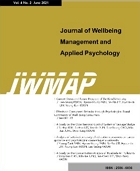A Study on the Impact of Climate Change on Health of the Vulnerable Classes in Korea
YUHee-Sang(Hee-Sang YU) (Unionenv. CO. LTD)
LEEWoo-Sik(Woo-Sik LEE) (Dept. of Chemical &Biological Engineering, Gachon University)
AWANAbdur Rehman(Abdur Rehman AWAN) (Dept of Software Engineering, Sangmyung University)
KWONWoo-Taeg(Woo-Taeg KWON) (Department of Environmental Health & Safety, Eulji University)
Abstract
Purpose. The purpose of this study was to investigate the impact of climate change on public health, particularly focusing on vulnerable populations in South Korea. The study aimed to examine the relationship between climatic variable temperature, precipitation, humidity, and wind speed—and the prevalence of environmental diseases (cardiovascular, respiratory, cancer related, heat-related illnesses, and mental disorders) across different age groups (1-14, 15-39, and 40+). Research Design, Data, and Methodology Using data from meteorological stations and the Health and Medical Big Data Open System, covering the period from 2019 to 2023, the analysis involved statistical methods, including linear regression and correlation analysis, using R software. Results: The results showed strong interrelationships among climate variables, particularly negative correlations between precipitation, wind speed, and temperature. However, the correlation between climate factors and health outcomes was generally weak, with only modest associations between temperature and environmental diseases in the elderly population. Additionally, scatter plot analyses confirmed the lack of a significant relationship between temperature and disease prevalence. Conclusion: These findings suggest that the health impacts of climate change are likely mediated by additional factors such as socioeconomic disparities, healthcare accessibility, and urban conditions. The study emphasizes the complexity of climate-related health risks, calling for localized, multidisciplinary interventions, such as climate-resilient healthcare systems and infrastructure, to mitigate these challenges. By integrating age-specific analyses, this research provides unique insights and underscores the urgency of proactive measures to protect vulnerable populations from evolving climate-induced health risks.
- keywords
- Climate Change, Vulnerable Populations, Public Health Impact, Variables
- 다운로드 수
- 조회수
- 0KCI 피인용수
- 0WOS 피인용수















